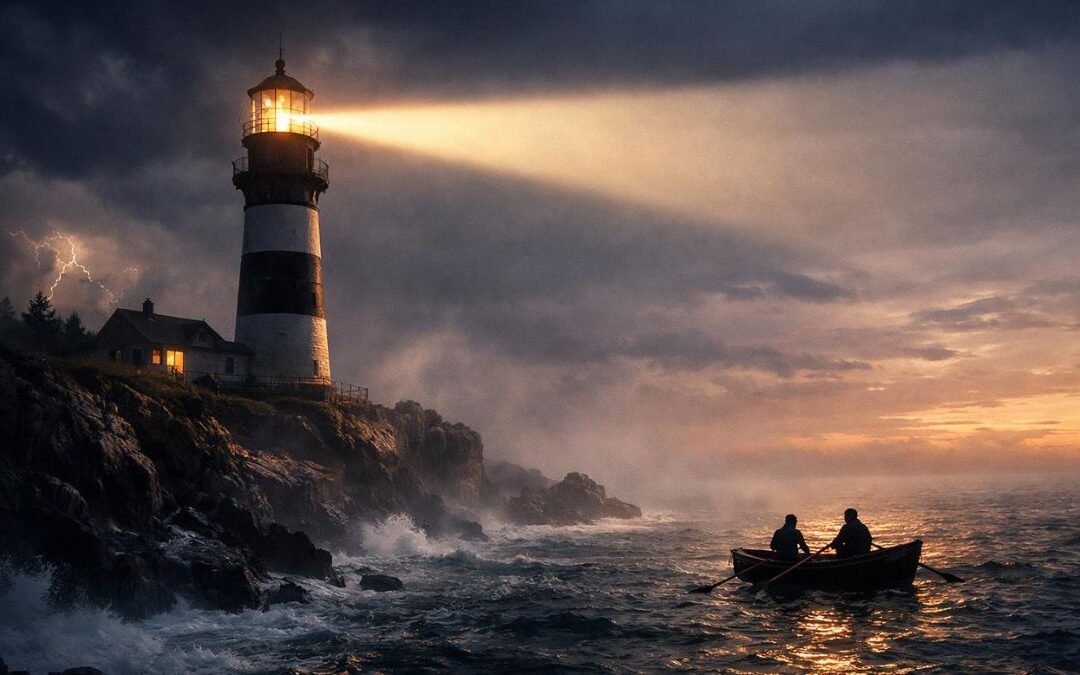- The Deep Dive
- The Grand Confluence: An Introduction
- The Architecture of Accumulation: How Deltas Form
- The Perfect Recipe: Conditions Favoring Delta Growth
- A World of Shapes: Classifying Delta Types
- More Than Mud: The Vital Importance of Deltas
- Precarious Existence: Deltas Under Increasing Threat
- Cherishing Our Shifting Shorelines
- Reading Comprehension Quiz
- Let’s Talk
- Listening Comprehension Quiz
- Let’s Learn Vocabulary in Context
- Vocabulary Quiz
- Let’s Discuss & Write
- Learn with AI
- Let’s Play & Learn
The Deep Dive
The Grand Confluence: An Introduction
Imagine the journey of a great river. Born perhaps as a trickle in high mountains, fed by rain and melting snow, it carves its path across continents, gathering strength and volume, carrying with it the very essence of the land it traverses – sand, silt, and clay. But every journey has an end. For many rivers, this finale occurs at the dramatic meeting point with a vast body of standing water, be it an ocean, a sea, or a lake. It is here, at this grand confluence, that one of Planet Earth’s most dynamic and vital landforms is often created: the river delta. Named by the ancient Greek historian Herodotus, who noted the triangular shape of the Nile’s deposited sediments resembled the uppercase Greek letter delta (Δ), these formations are far more than just muddy endpoints. They are intricate, ever-changing landscapes, cradles of biodiversity, centers of human civilization, and profoundly sensitive indicators of environmental health. Let’s journey downriver and explore the fascinating story of deltas.
The Architecture of Accumulation: How Deltas Form
The creation of a delta is a masterpiece of natural engineering, driven by the fundamental laws of physics. As a river flows, the energy of its moving water allows it to transport a significant load of sediment – particles eroded from the land upstream. This sediment ranges in size from microscopic clay particles and fine silt to coarser sand and gravel. The faster the river flows, the more sediment, and the larger the particles, it can carry.
The magic happens when the river enters a large body of relatively still water like an ocean or lake. Suddenly, the confinement of the river channel disappears, and the water spreads out. This rapid decrease in velocity means the river loses its energy, and consequently, its ability to transport its sedimentary load. Like a tired traveler dropping heavy bags, the river begins to deposit the material it has carried for so long.
This process, known as deposition, starts with the heaviest particles settling first, closer to the river mouth, while finer materials like silt and clay are carried further out before gently settling. Over time – often millennia – layer upon layer of this deposited sediment accumulates. The river channel may become choked with its own deposits, forcing the water to find new paths to the sea, splitting into a network of smaller channels called distributaries. This continuous process of deposition and channel-switching gradually builds up new land, extending the coastline outwards in the characteristic delta shape.
The Perfect Recipe: Conditions Favoring Delta Growth
Not every river meeting the sea forms a significant delta. Specific conditions need to align for these impressive landforms to emerge:
- High Sediment Load: The river must carry a substantial amount of sediment. Rivers draining large, easily eroded catchment areas, or those experiencing significant rainfall or glacial melt, tend to carry more sediment.
- Calm Receiving Basin: The body of water the river flows into needs to be relatively calm. Strong waves and powerful tidal currents can redistribute or wash away the deposited sediment faster than the river can supply it, preventing delta formation. Areas with low tidal ranges and protection from strong wave action, like enclosed seas (Mediterranean, Gulf of Mexico) or sheltered bays, are ideal.
- Shallow Continental Shelf: A gentle slope offshore allows sediment to accumulate relatively close to the river mouth without being lost into deep abyssal plains.
- Stable Sea Level (or Slow Rise): For sediment to build upwards and outwards effectively, the relative sea level needs to be stable or rising slowly enough for deposition rates to keep pace or exceed the rise. Rapid sea-level rise can drown a delta before it properly forms.
A World of Shapes: Classifying Delta Types
Just as rivers and coastlines vary, so do deltas. Geomorphologists classify them based on the dominant processes shaping them – river deposition, wave action, or tidal currents – leading to distinct shapes:
- Arcuate (Fan-shaped) Deltas: This is the classic delta shape, resembling a triangle or fan with a convex (curved outwards) seaward edge. They form where river deposition is significant, but wave action is strong enough to smooth the coastline and redistribute sediment. The river typically branches into numerous distributaries. Famous examples include the Nile Delta in Egypt and the Niger Delta in Nigeria.
- Bird’s Foot (Digitate) Deltas: These deltas occur where river deposition is overwhelmingly dominant, and wave and tidal influences are weak. The river builds long, projecting distributary channels, like the fingers or toes of a bird’s foot, stretching far out into the receiving basin. They are often composed of finer sediments. The Mississippi River Delta in the United States is the quintessential example.
- Cuspate Deltas: Shaped like a pointed tooth or cusp, these deltas form where strong wave action hits the coast head-on from a consistent direction. Waves push sediment delivered by the river outwards along the coast from the river mouth, creating flanking beaches or barriers, resulting in a pointed shape. The Tiber Delta in Italy exhibits this form.
- Estuarine Deltas: Sometimes, a river deposits its sediment load within the confines of an estuary – a drowned river valley flooded by rising sea levels. The delta builds outwards within the estuary’s shape, rather than extending the open coastline. The Seine Delta in France is an example.
- Inland Deltas: Not all deltas meet the sea. Some rivers flow into large inland lakes or depressions, or even arid basins where the water evaporates or seeps away. These are known as inland deltas. The Okavango Delta in Botswana is a spectacular example, creating a vast wetland oasis within the Kalahari Desert.
More Than Mud: The Vital Importance of Deltas
Deltas might seem like humble accumulations of river mud, but they are among the most ecologically and economically productive regions on Earth.
- Ecological Hotspots: The constant supply of nutrients carried by the river makes delta soils incredibly fertile. This fertility supports lush vegetation, forming unique and diverse ecosystems like wetlands, marshes, swamps, and mangrove forests (in tropical regions). These habitats provide critical breeding grounds, nurseries, and feeding areas for countless species of birds (especially migratory birds), fish, shellfish, amphibians, reptiles, and mammals. Deltas act as giant natural filters, improving water quality, and their wetlands buffer coastal areas from storm surges.
- Cradles of Civilization: The fertility of deltas has not been lost on humans. Some of the world’s earliest civilizations arose on deltas, harnessing their rich soils for agriculture – think ancient Egypt on the Nile Delta or Mesopotamia between the Tigris and Euphrates rivers (which form a combined delta system). Today, deltas support incredibly high population densities, housing hundreds of millions of people who rely on deltaic agriculture (especially rice cultivation in Asia) and fisheries for sustenance and livelihoods. Major cities like New Orleans, Kolkata, Alexandria, and Shanghai are built on or near deltas. Deltaic regions can also hold significant deposits of fossil fuels formed from ancient buried organic matter.
Precarious Existence: Deltas Under Increasing Threat
Despite their importance, river deltas are facing a precarious future. These dynamic environments exist in a delicate equilibrium between sediment supply, sea level, and land subsidence (the natural sinking or settling of the delta sediments under their own weight). Human activities and global environmental change are disrupting this balance, making deltas some of the most vulnerable landscapes on the planet.
- Sediment Starvation: The construction of large dams upstream traps vast quantities of sediment in reservoirs. This ‘starves’ the delta downstream of its essential building material. Without replenishment, the natural processes of subsidence and erosion overwhelm deposition, causing the delta to shrink and wetlands to be lost. The Nile Delta dramatically shrank after the construction of the Aswan High Dam, and the Colorado River Delta has all but disappeared due to upstream water management.
- Water Extraction & Channelization: Diverting river water for irrigation and industrial use reduces the flow reaching the delta, further limiting sediment transport. Building artificial levees along river channels prevents natural flooding, which historically deposited sediment across the delta plain, nourishing wetlands and maintaining land elevation.
- Land Use Change & Pollution: Deforestation in river catchments can increase erosion and sediment supply initially, but unsustainable agriculture, urbanization, and industrial development within the delta itself destroy natural habitats, compact soils (increasing subsidence), and introduce pollutants that harm delicate ecosystems.
- Climate Change & Sea-Level Rise: Deltas are on the front line of climate change impacts. Rising global sea levels directly inundate low-lying delta lands. Furthermore, climate change is predicted to increase the intensity of tropical storms and hurricanes, leading to more severe storm surges and flooding in vulnerable delta regions. Saltwater intrusion into freshwater sources and agricultural lands is another growing threat.
Cherishing Our Shifting Shorelines
River deltas are truly remarkable places – dynamic borderlands where terrestrial and aquatic realms merge. They are testaments to the immense power of rivers to shape our planet, building new land atom by atom, grain by grain. These intricate, fertile landscapes sustain incredible biodiversity and have nurtured human societies for millennia. Yet, they are fragile systems, highly sensitive to upstream actions and global changes. Understanding the processes that create and sustain deltas is crucial if we are to manage our river systems wisely and protect these vital, vulnerable, and endlessly fascinating environments for generations to come. They remind us that the Earth’s surface is not static, but a constantly evolving canvas painted by the forces of nature, and increasingly, by the hand of humanity.
Reading Comprehension Quiz
Let’s Talk
Listening Transcript: Please don’t read the transcript before you listen and take the quiz.
So, we’ve just journeyed downriver, metaphorically speaking, and explored these incredible places called deltas. Fascinating, right? The sheer power of a river, patiently carrying bits of mountain and field all the way to the sea, and then just… dropping it all to build new land. It’s like nature’s own slow-motion construction project. When you look at a map, those intricate, branching patterns of deltas like the Mississippi or the Ganges-Brahmaputra are just stunning.
What really gets me, though, is the timescale involved. We talk about deltas forming over millennia. Imagine standing on the edge of a delta – maybe near New Orleans or somewhere in the Mekong region. The ground beneath your feet might have been part of a distant mountain range thousands of years ago! That little grain of sand has had quite the adventure. It makes you feel incredibly small, but also connected to this vast, slow geological dance.
But the article also paints a pretty worrying picture, doesn’t it? These places that nurtured ancient civilizations and support hundreds of millions of people today are genuinely on the front lines of environmental change. It’s not just some abstract scientific concept; it’s about people’s homes, their farms, their entire way of life literally sinking or washing away.
Think about the “sediment starvation” issue. We build dams upstream, often hundreds or thousands of miles away, usually for really important reasons like generating hydroelectric power or controlling floods or storing water for agriculture. Makes sense from one perspective, right? But then, downstream, the delta stops getting its vital supply of mud and sand. It’s like cutting off the food supply for the land itself. The natural sinking process (subsidence) continues, but there’s no new sediment building it back up. Add sea-level rise into the mix, and you’ve got a recipe for disaster.
Have you ever really thought about that interconnectedness? How an action taken way up in the mountains can determine the fate of a coastal community generations later? It raises some tough questions about responsibility. Do countries upstream have a responsibility to consider the downstream impacts on deltas, even in neighbouring countries? How do we balance the need for energy and water management with the need to protect these incredibly fragile and vital ecosystems? There are no easy answers there.
I was reading recently about floating agriculture techniques being developed in places like Bangladesh, where traditional farming land is being lost to flooding and salinity. People are building floating rafts out of water hyacinth and other materials, piling soil on top, and growing vegetables. It’s an amazing example of human ingenuity and adaptation in the face of massive environmental challenges. But it also highlights the scale of the problem they’re facing.
And it’s not just about the land disappearing. It’s about saltwater creeping further inland, poisoning rice paddies, contaminating drinking water. It’s about the loss of those incredibly rich wetland ecosystems – the mangroves that act as fish nurseries and storm buffers. It’s a complex web, and pulling one thread, like trapping sediment behind a dam, can unravel so much else.
What can we even do? It feels overwhelming. On a large scale, it involves international cooperation on river basin management, investing in sediment bypass technologies for dams (which exist but are complex and expensive), restoring wetlands, and, of course, tackling the root cause of accelerated sea-level rise – climate change. On a more personal level, maybe it starts with just appreciating these places. Understanding that the coast isn’t static. Realizing that our actions, even far inland, have consequences downstream.
Have you ever lived near a major river or a coastal area? Have you noticed changes over time? Maybe more frequent flooding, or changes in the shoreline? It’s easy to think of geology as something slow and distant, but in places like river deltas, you can see landscape changes happening within a human lifetime, accelerated by our own activities. It’s a stark reminder that we live on a dynamic planet, and our relationship with it is becoming increasingly unbalanced.
So, next time you see a picture of a delta, or maybe even fly over one, take a moment. Think about the journey of that sediment, the life it supports, the civilizations it cradled, and the challenges it faces. These muddy, watery, ever-changing places are more important, and more vulnerable, than we often realise. What do you think are the most crucial steps we need to take to help protect these vital intersections of land and water?
Listening Comprehension Quiz
Let’s Learn Vocabulary in Context
Alright, let’s dig a bit deeper into some of the words we used while exploring the world of river deltas. Using precise language helps us understand these complex environments better, and these words can be really useful in everyday situations too!
We talked a lot about sediment. Sediment is simply material, like stones, sand, silt, and clay, that is carried by water (or wind, or ice) and deposited somewhere else. In the article, it was the crucial stuff the river carries and then drops to build the delta. You encounter sediment in everyday life too, though perhaps on a smaller scale. After a heavy rain, you might see fine sediment washed onto the pavement. If you have a fish tank, sediment can accumulate at the bottom. Even the dregs at the bottom of your coffee cup could technically be called sediment! It refers to those settled particles.
The process of dropping this material is called deposition. This is the geological process in which sediments, soil, and rocks are added to a landform or landmass. The river’s loss of energy causes deposition at the delta. Think about wind deposition creating sand dunes, or glacial deposition leaving behind mounds of debris called moraines. Even in your home, dust settling on furniture is a form of deposition (though probably not one you appreciate!). It’s the act of putting something down or depositing it.
We used the word confluence to describe the meeting point of the river and the sea. Confluence literally means the junction of two rivers, especially rivers of approximately equal width. By extension, it can mean the place where things merge or flow together. While we used it for river-meets-sea, you could talk about the confluence of the Blue Nile and White Nile rivers in Khartoum. Figuratively, you can use it for ideas or cultures. You might talk about a city being a confluence of different traditions, or a new invention being born from the confluence of several existing technologies. It’s about things coming together.
Deltas are known for having incredibly fertile soil. Fertile means capable of producing abundant vegetation or crops. The nutrients in the river sediment make delta land super fertile, perfect for farming. We use fertile more broadly too. A fertile mind is one that produces lots of ideas. A fertile imagination is vivid and creative. A region might be fertile ground for new businesses if the conditions are right. It implies richness and productivity.
We described deltas as having intricate networks of distributaries. Intricate means very complicated or detailed. Think of the complex branching pattern of waterways in a delta – that’s intricate. You can use it for anything with complex details. The plot of a mystery novel might be intricate. A piece of lace can have an intricate pattern. The workings of a watch are intricate. It suggests complexity and often, a degree of delicacy or fine detail.
Those branching waterways themselves are called distributaries. A distributary is a stream that branches off and flows away from a main river channel. They are characteristic of deltas, spreading the water and sediment load over a wider area. This one is pretty specific to geography, but understanding it helps visualize how deltas work – distributing the flow rather than tributaries which contribute to the flow. You probably won’t use it talking about your weekend plans, unless you’re a geographer!
We discussed subsidence as the natural sinking of the delta land. Subsidence is the gradual caving in or sinking of an area of land. In deltas, it happens as the loose, waterlogged sediments compact under their own weight. It also happens elsewhere, sometimes due to mining underground or extracting large amounts of groundwater. If you hear about sinkholes or buildings developing cracks in certain areas, subsidence might be the culprit. It’s a downward motion of the ground surface.
Deltas were described as vulnerable landscapes. Vulnerable means susceptible to physical or emotional attack or harm. Deltas are vulnerable to sea-level rise, storms, and human impacts like dam construction because they are low-lying and rely on a delicate balance of natural processes. We use vulnerable all the time to describe people (e.g., vulnerable populations needing extra support), systems (a computer system vulnerable to hacking), or even feelings (“He felt vulnerable after sharing his secret”). It means being exposed to potential harm.
These delta systems exist in a delicate equilibrium. Equilibrium means a state in which opposing forces or influences are balanced. Deltas are in equilibrium when the rate of sediment deposition roughly balances the rate of subsidence and erosion. Human activity and climate change disrupt this equilibrium. We talk about equilibrium in physics and chemistry, but also in economics (supply and demand equilibrium) or even work-life balance (finding a personal equilibrium). It’s all about balance.
Finally, while not explicitly in the main delta article but relevant to dynamic landscapes, sometimes features can be ephemeral. Ephemeral means lasting for a very short time. While major deltas persist for millennia, some features within them, like small channels or sandbars, might be ephemeral, changing with floods or seasons. We use ephemeral more broadly to describe anything short-lived. Childhood friendships can sometimes feel ephemeral. Fashion trends are often ephemeral. The beauty of a blooming flower is ephemeral. It captures that fleeting, transient quality.
So, sediment, deposition, confluence, fertile, intricate, distributaries, subsidence, vulnerable, equilibrium, and even ephemeral – hopefully, exploring these words gives you a richer understanding of deltas and adds some useful tools to your everyday English vocabulary!
Vocabulary Quiz
Let’s Discuss & Write
Let’s Discuss
- Think about a river or coastline you know well. Have you noticed any signs of deposition (like sandbars, beaches growing) or erosion (banks collapsing, cliffs receding)? What forces do you think are most active in shaping that specific place?
- The article highlights how actions far upstream (like building a dam) drastically affect coastal deltas. Can you think of other examples where actions in one place have significant environmental consequences elsewhere?
- Given the threats of sea-level rise and subsidence, what do you think is the future for major delta cities like New Orleans, Kolkata, or Dhaka? What kind of adaptations seem most feasible or necessary?
- Who should be responsible for protecting river deltas? Should it be local communities, national governments, international bodies, or the corporations whose activities (like dam building or contributing to climate change) impact them? Why?
- How does learning about the slow, geological process of delta formation make you feel about the pace of human-induced environmental change? Does it change your perspective on issues like climate change or land development?
Let’s Write
Writing Prompt:
Choose ONE of the following options:
- Option A: Describe a dynamic natural landscape you are familiar with (it could be a beach, a riverbank, a forest edge, a desert area, etc.). Focus on the natural forces that shape it (like water, wind, erosion, growth, decay) and how human activity interacts with or influences these processes.
- Option B: Research a specific river delta anywhere in the world (e.g., Mekong, Ganges-Brahmaputra, Volga, Danube, Yangtze). Write a short profile (around 300-400 words) highlighting its key geographical features, its importance to local people and ecosystems, and the main challenges or threats it currently faces.
Directions & Tips:
- Introduction: Clearly state the landscape or delta you are focusing on and briefly introduce its key characteristic (e.g., “The constantly shifting sand dunes at X beach…”, “The vast and vital Mekong Delta…”).
- Sample phrase (Option A): “The landscape surrounding [Place Name] is constantly being reshaped by…”
- Sample phrase (Option B): “[Delta Name] is one of the world’s major river deltas, formed where the [River Name] meets the [Sea/Ocean Name].”
- Body Paragraphs:
- (Option A): Describe the natural forces at work (use vivid language!). Explain how these forces change the landscape over time. Then, discuss how humans interact with this landscape – do they try to control the forces (build walls, plant trees)? Do their activities accelerate or alter the natural changes?
- (Option B): Describe its main features (e.g., size, shape, main rivers/distributaries, type of ecosystem like mangroves or wetlands). Explain why it’s important (e.g., agriculture, population, biodiversity). Discuss the major threats it faces (e.g., sea-level rise, dams, pollution).
- Sample phrase: “One of the most significant forces acting here is…”
- Sample phrase: “This region is crucial for… providing…”
- Sample phrase: “However, like many deltas worldwide, it faces serious challenges, including…”
- Conclusion: Briefly summarize the dynamic nature of the place (Option A) or the key takeaway about the specific delta (Option B). You could offer a final thought on its future or the human relationship with it.
- Sample phrase: “Understanding these natural dynamics is crucial for…”
- Sample phrase: “The future of [Delta Name] depends on addressing…”
Remember: Use descriptive adjectives and precise verbs. Try to incorporate relevant vocabulary (like sediment, deposition, erosion, fertile, vulnerable, equilibrium, intricate) where appropriate. Ensure your points are clearly organized.
Learn with AI
Disclaimer:
Because we believe in the importance of using AI and all other technological advances in our learning journey, we have decided to add a section called Learn with AI to add yet another perspective to our learning and see if we can learn a thing or two from AI. We mainly use Open AI, but sometimes we try other models as well. We asked AI to read what we said so far about this topic and tell us, as an expert, about other things or perspectives we might have missed and this is what we got in response.
It’s great to have this opportunity to add a few more layers to our understanding of river deltas, building on the excellent overview already provided. As someone who studies these fascinating systems, I can tell you they are even more complex and dynamic than they first appear.
One aspect we didn’t delve deeply into is the inherent instability and dynamism of delta formation itself. Deltas don’t just grow steadily outwards in one direction. Rivers naturally want to find the shortest, steepest path to the sea. As sediment deposits build up in one area, making the river’s path longer and less steep, the river will eventually, often quite suddenly during a major flood, cut a new, shorter course to the sea. This process is called avulsion, or channel switching. It means that delta growth occurs in distinct phases, building up one area (a delta lobe) for perhaps hundreds or thousands of years, before switching to build a new lobe elsewhere. The Mississippi Delta is a classic example, having switched its main outlet numerous times over the past few thousand years. This natural switching is vital for distributing sediment across the entire delta plain, but it poses huge challenges for human settlement.
Beneath the surface, deltas have a distinct internal architecture, typically described in terms of bottomset, foreset, and topset beds. Imagine the delta building outwards into the sea. The fine clay and silt carried furthest out settle gently on the basin floor – these are the bottomset beds. The coarser material deposited on the steeper, advancing edge of the delta forms inclined layers – the foreset beds. As the delta top builds up to near sea level, river channels and floodplain deposits spread across the surface – these form the relatively flat topset beds. Understanding this internal structure is crucial, especially because ancient, buried deltaic deposits (paleodeltas) are major reservoirs for oil and natural gas, formed from the rich organic matter trapped within the sediments. Geologists study these subsurface patterns intensely.
We should also appreciate the sheer scale and diversity. While we mentioned types like arcuate and bird’s foot, the range is immense. Compare the enormous Ganges-Brahmaputra Delta, supporting one of the highest population densities on Earth, with smaller, steeper deltas formed by rivers draining mountainous coastal regions. The sediment type also varies hugely – from the muddy deltas of large lowland rivers to the sand- and gravel-dominated deltas built by shorter, higher-energy rivers.
Finally, while we discussed human impacts like dams starving deltas of sediment, direct human engineering within the delta itself is also critical. Building extensive networks of levees prevents the natural flooding and sediment dispersal that builds and maintains the delta plain. Dredging deep navigation channels can alter salinity patterns and sediment movement. Constructing jetties at river mouths can interrupt the natural longshore drift of sediment, causing erosion elsewhere. These interventions, often necessary for navigation or flood protection, frequently have complex and unintended consequences, disrupting the delta’s natural equilibrium in ways we are still striving to fully understand and mitigate.
So, remember that deltas aren’t just static landforms on a map. They are incredibly dynamic, four-dimensional systems (space plus time), constantly adjusting to changes in sediment supply, sea level, and river course, both naturally and increasingly, due to human influence. Their past holds clues to valuable resources, and their future requires careful, informed management.










0 Comments